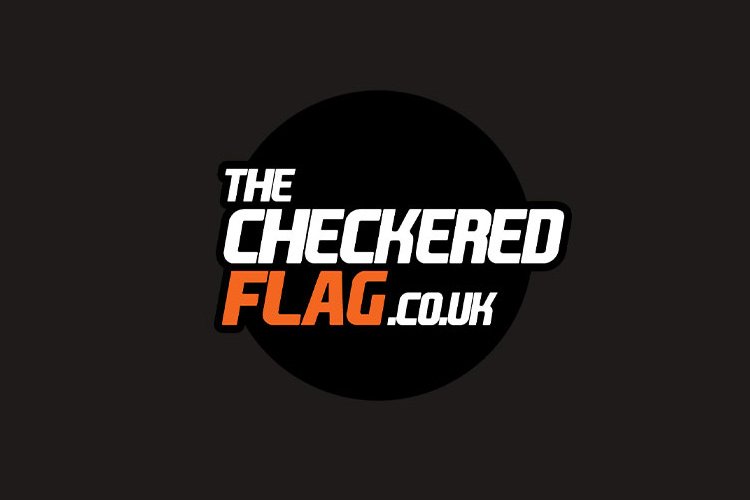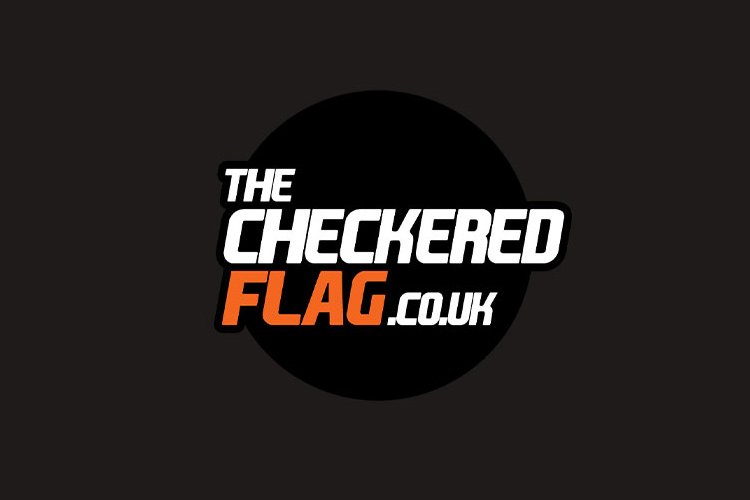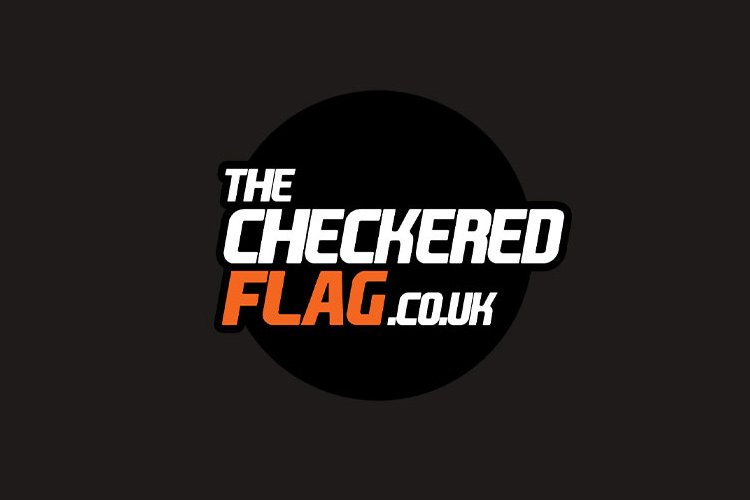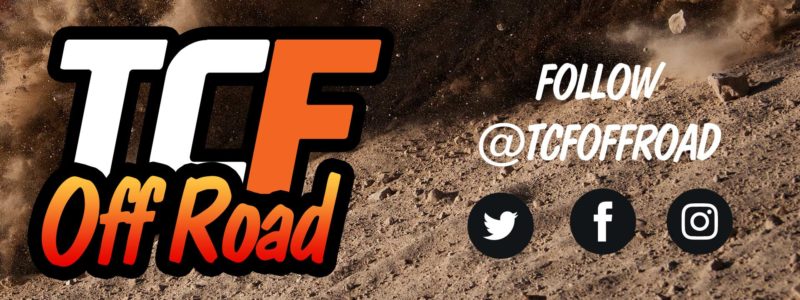Motorsports Racing News & Blog Articles
INTERVIEW: SODA President Willie Freshour shakes the can
The Short-course Off-road Drivers Association (SODA) was a household name from the 1970s to 1990s as the premier location for short course competition. Despite its history, it disappeared for three decades before the brand was revived in 2021 by Willie Freshour, a stock truck racer who serves as its president. Ahead of the second race of the 2022 season on Saturday at Gravity Park USA, The Checkered Flag received the opportunity to speak to Freshour about the series.
Freshour was initially not keen on organising races since being a driver, father, and owner of a welding company in Wisconsin was already more than enough on his plate. A phone call to Gravity Park owner Bob Schneider about races at the track turned on him when Schneider suggested he hold one himself: “Anytime anybody puts a race on, an off-road race, if it’s not more than a day’s drive, I always try to make it and support the track and the race. When I called him, he’s like, ‘Well, whatever you want to do,’ and I said, ‘No, I don’t want to put on races,’ and he’s like, ‘I know you’d be good at it.’ I said, ‘Well, maybe, but I’m a racer and I already own technically two businesses.’ I’m like, ‘I’m a busy guy and I have a young family,’ and he’s like, ‘Why don’t you just throw a special?’
“I told him I would if two of my friends that were very experienced would help me, and I called them up, they said they would. So I told Bob I would, and within like a week, they both quit, and I ended up restoring SODA.”
The opportunity to bring back the SODA identity came after Freshour noticed the rights to the long dormant name, complete with its archives and some equipment, were available.
“We made all the phone calls and found out we could acquire the name for our short series and then late in the series, we found out the tech trailer still existed and it was at a farm for twenty-three years,” he recalled. “It had all the tech equipment in it and plenty of mice. So our blue tech trailer is actually the original SODA tech trailer from the eighties and nineties with all the equipment and tools in it.
“We also acquired the history of basically Midwest off-road racing with the tech trailer of five, four-by-four skids of paperwork. That’s in my garage where my wife’s minivan is supposed to park. I’m trying to get the Off-Road Motorsports Hall of Fame; they are interested in archiving it, but with all the craziness going on in the economy, they’re not running over here to do it yet. It’s pretty that I have the history of off-road racing in Wisconsin sitting in my garage, but it came with the trailer.”
His idea of using the SODA name for one race soon transformed into three at Gravity Park in 2021. If things worked out, he had a series that could run a larger schedule the following year. If not, “I’d be selling SODA t-shirts for the rest of my life to pay off the debt I had from the three races.”
 Credit: SODA
Credit: SODAThe 2022 schedule expanded to five races, including a pair outside of Gravity Park at Slinger Speedway and Outagamie Speedway & County Fair. The former, which held the season opener on 6/7 May, was a particularly unusual sight for off-road racing as it is a pavement quarter-mile oval for stock cars. Slinger owner Todd Thelen told TCF that the race’s genesis came via his and Freshour’s friend Garret Loehrer performing an off-road stunt that drew great fan interest. Despite early doubts, they decided to follow through.
“Me and the owner of Slinger kind of were hesitant. We thought it was a dumb idea at first,” Freshour said. “Even the SODA organisation, we talked about it in a meeting, and one of our board members was like, ‘Have you ever been to SODA?’ It’s a concrete bowl with walls on it, like how are you supposed to have an off-road race? But we figured it out, obviously.”
Designing the course proved to be a challenge for builder Town & Country, but by the end, SODA had a layout that used the oval and infield figure-eight track while also incorporating an over/under jump at the centre. The configuration featured a mixture of asphalt and dirt sections along with jumps.
“We really wanted to have the crazy turn one, turn two of asphalt of Slinger, with trucks sliding sideways around it,” he commented. “That was I think an exciting aspect to have as part of an off-road race. Obviously, fans that are used to watching the regular stock car show are pretty excited to see vehicles jumping over and flying through the air across the start/finish line. It was a neat course.
“There were a lot of racers that were afraid to come out the first year, but they saw the videos and some of them were even in the stands and said, ‘Aw man, I should have came out.’ They thought they wouldn’t be able to turn their cars or get them to just slide around because you still have to run like off-road race tyres. It’s a pretty demanding course on your tyres, compared to what we’re, you know. The dirt, we’re usually just trying to keep a sharp edge on our tyre, but the asphalt and dirt, the heavy braking and then sliding sideways, it’s just a whole new tyre game.
“But it was a lot of fun to drive it. I drove in it personally, and it was very technical and flowed real smoothly. You couldn’t tell that from looking at the track before the race, like how how smooth you could run the course and drift around corners and stuff. It was a lot of fun.”
A self-proclaimed fan of short track racing, Freshour is open to bringing SODA to other ovals in the area whenever possible. In bringing a new type of racing to an audience mainly familiar with stock cars and late models, he feels such events are a major boon for the venues’ finances.
“I think it’s good for racing in Wisconsin if we tour around and hit dirt track and asphalt tracks locally and we keep our drivers from having to drive super far, and put these crazy courses together in front of new fans that want to come out,” he explained. “A lot of these, especially the asphalt tracks, they don’t make a ton of money on their regular show, and then they’ll have a destruction-type show where they pack the house every year. What kind of our hope is that basically within three years or something, we’re competing with these tracks. We’re competing with those numbers of their destruction shows where we can pack the place once a year for these tracks.
“Our circuit can tour around this area of Wisconsin and really bring the fans out. It’s just good for the whole sport because then those fans are going to come to the regular races too at those circle tracks and/or follow our circuit around.
“With the overhead that’s happening in the last couple of decades with race tracks, they kind of need these heavy shows to keep on operating and there’s nothing worse if a track closes their doors, they generally don’t reopen. These guys all need to make money to pay their bills. Tracks are huge, huge investments and they need a big influx of income to come in. Everybody seemed to love the races that came out, the racers and the fans and everything was super positive, and anybody that was worried about us running on asphalt and dirt kind of got over it real fast.”
Freshour did not specifically name any venues that the series is targeting, mainly because he “love(s) them all. We’re already talking to a lot of other tracks for next year, and I guess fans are just going to have to wait and see. But we’re adding a lot of tracks for next year. Personally, as a racer and a promoter, I love going to the small dirt tracks and the well-known asphalt tracks. They’re all fun, and they all have their own great fans and their own personalities, and it just adds an awesome variety for the racers.
“Next year, we’re hoping to also do an endurance race where a rally group is coming out for their points too and motocross and stuff, but we’re just going to do one for the year at the end of the year and we do have one bigger short course track. But the rest of the races, I want to keep all that. I’d like to be in the oval tracks for the whole series, so that’s kind of our main thing that we’re trying to do.”
The Midwest is one of the two biggest regions in the United States for short course racing along with the West Coast, and Freshour believes SODA has a place to stay there even with the presence of other divisions like Championship Off-Road. Freshour himself has competed in the series with his truck. While COR, which was founded just a year before SODA, is the top Midwestern short course series today, SODA intends to be a complementary, grassroots-focused operation rather than a competitor. He envisioned SODA as the off-road equivalent to dirt track racing’s International Motor Contest Association; although the IMCA is over a century old, counterparts like the Super DIRTcar Series, USAC, and World of Outlaws often enjoy bigger slices of the dirt pie.
“We want them to continue to do well and run those huge tracks with the big TV packages and stuff and the pro racers with the big sponsorship deals. That’s all great, but we kind of want to be like the IMCA of off-road racing and help grow the the local aspect of the sport. In the next couple of years, we’re hoping to sanction more series around the U.S. and bring them under the same points battle and stuff. It’ll be definitely very good for the sport, and just the racing world in general, I think.”
 Credit: Freshour Motorsports
Credit: Freshour MotorsportsSODA’s small, old-school nature is apparent not only in the courses it runs, but also eschewing a television or online streaming deal in favour of encouraging fans to attend while also providing an affordable experience for spectators and racers alike. After all, Freshour explained, “the cost for a fan to come out is similar or less than going to a movie. Having an affordable entertainment to fans is a big deal, I think these days. Anybody can put an event on and charge fifty to seventy dollars for a fan to come out. I mean, that’s putting an event on where a fan is paying fifteen, twenty bucks. That makes it a better deal. You can get more volume in instead of the high price.”
He continued, “[Championship Off-Road’s] whole goal is to give you the TV time regardless of the cost to the racer, and our whole deal is to give the racers way more affordable racing with higher payback and more local, real fan exposure. It’s really important to Champs’ sponsors that they have X amount of people watching the live stream and stuff, and our goal is to get butts in the seats. We’re not as concerned about the fans that are watching the race on YouTube, at home. We’re trying to give the best show we can to the fans that came out and the racers that came out. Those are the people we are focusing on. We try to just give teaser videos to the people online, so they see what they’re missing and if they want to see the whole race, they’ve got to come. I want them there.
“In this technological world where everybody stares at their cell phone and stuff, we want real people in the stands, drinking beer and eating cheese curds, and feeling the roar of the race engines and smelling race fuel. That’s the real experience. There’s no real racing experience from watching on your cell phone, sitting on a couch. And we just can’t spend too much money. I feel like the other series just spend so much money trying to give the at-home fans the best experience they can, and I feel we’d rather a hundred percent just concentrate on the people that are there.”
With various disciplines hoping to reduce costs for drivers and teams, SODA’s strategy for Gravity Park is to not charge an entry fee for those in Classes 8 and 11, both of which have “over fifty” cars in Wisconsin each. Although a gamble regardless, it is one that SODA is willing to take.
“Nobody’s ever liked the fact that off-road racing has these high entry fees, and it was hard in the first place just to pay (Gravity Park) back a hundred percent and to bring in extra sponsor money for these classes,” Freshour stated. “The next step is to get rid of them if we can. I’m really hoping we can, one class at a time, just start abolishing the entry fees for a race series. The racers are the ones doing all the work, spending all the money on parts and putting on the show for the fans, and anything we can do to keep them on the track and save them money, especially in this economy, is always a step in the right direction.”
In contrast to SODA, COR recently provided streaming rights to FloRacing, which requires a $150 subscription; although other disciplines also have FloRacing as their broadcaster, the COR deal received polarising thoughts from the off-road community regarding its impact on accessibility. COR’s new media policy, which charges $1,500 annually for photographers in addition to fees for each team (more than the winner of a Pro 2 race who gets $1,200), has also been met with skepticism. Despite their differing philosophies, Freshour is optimistic that COR’s will work in the long run, comparing FloRacing to MAVTV and deeming both as vast improvements over the now-defunct SPEED.
“Champs put themselves kind of in a rough position because they just keep charging more for a lot of things. But personally, I think the FloRacing deal is a good thing for their series,” he opined. “Basically, what’s better: someone that’s not really a race fan clicking on the livestream and watching it for that eight-minute average, or the hardcore race fans that paid for FloRacing or will get FloRacing and are going to watch the entire race, and then have a high-quality race?
“Realistically, they might be cutting their viewership down, but they’re going to be pinpointing a heavier base of racers that want to watch the entire race, not just a quick clip. The last time I checked, their average viewership for the livestream is like eight minutes. That’s like almost the race or half of a race. If their average viewership goes from eight minutes to an hour, it definitely would be good.
“I think it’s a step in the right direction. I think that it’s one of those things. They just charge so much money in so many different ways. It’s gotten to the point where every time they have any kind of different charge, people just get upset. The news is always some charge, you know what I’m saying? It’s almost like a Boston Tea Party thing: the tea tax didn’t get everybody upset, it was the fact that the tea tax was like the fiftieth tax that came out that year. No one would have cared about paying a tea tax if it wasn’t the fiftieth tax, they weren’t just sick of taxes.”
 Credit: SODA
Credit: SODAAs with any racing championship, it is imperative that SODA be both entertaining for the crowd and competitive yet fair for racers. Prior to the 2022 season, the series brought in Ronald Karlman and Colton Schaal as buggy and UTV tech advisors, respectively, which added diversity to a technical inspection team that had truck backgrounds. Freshour recalled 2021 saw him being repeatedly called over by the group to assist in checking buggies “because no one knew anything about [them], and it was kind of an afterthought. I’m like, these super experienced guys don’t know every type of race vehicle.”
Karlman had been racing Volkswagen off-roaders and building their engines for over four decades, while Schaal is a bright mind in an otherwise young class. In hiring them, Freshour noted, “We don’t need like ‘jack of all trades, master of none’ tech people. […] It makes a really strong team. Tech is important to keep guys honest and keep the racing fair, and on the other hand also (to) not make bad decisions. If a tech guy disqualifies you for something that you shouldn’t have been disqualified for, it’s a way bigger problem than having had an unstrict tech that didn’t check anything.”
As the Gravity Park round looms, Freshour is more than grateful for the team at SODA.
“As I’m the president, people see my name on Facebook a lot and stuff,” he began, “but realistically, there’s forty officials and volunteers and the four-wheel drive off-road club, they bring volunteers. It takes a village to run this and I’m very lucky what we’re doing with SODA resonates so positively with so much of the racing community that we have. Really awesome volunteers and help with tons of experience, and a lot of them have more experience than I do, maybe sharper than I am too. It makes just a massive difference in how things run, having all that experience at the track. Everybody’s been in so many different series and so many races, they know how it’s supposed to work. I can’t say enough about the volunteers and the SODA board members and officials and class reps and how much work they put into it and how hard they work at it, and our media too.
“That’s really what makes all this possible, you know?”
Transcript and audio coming soon.
Copyright
© The Checkered Flag

 Follow @tcfoffroad on:
Follow @tcfoffroad on: